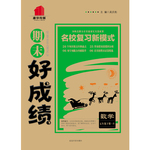题目内容
【题目】A Dutch artist and designer has come up with a device which he hopes will get rid of pollutants from Beijing's smog skies, creating clean air for the city's mask-wearing people.
An electromagnetic field(电磁场) will pull particles(微粒) in the smog to the ground where they can be easily cleaned.
“It’s like when you have a balloon which has static(静电) and your hair goes toward it. Same with the smog,” says artist Daan Roosegaarde.
His studio has reached an agreement with the Beijing government to test the technology in one of tile capital’s parks.
With its skies regularly covered by dirty gray smog, Beijing this week announced a series of emergency measures to handle the problem.
Roosegaarde says an indoor model device has already proven it works and is confident that the results — with the help of a team of scientists and engineers — can be replicated(复制的) outside.
“Beijing is quite a good place because the smog in Beijing is quite low. It lies in a valley so there's not so much wind. It's a good environment to explore this kind of thing.”
“We'll be able to purify the air and the challenge is to get the top of the smog so you can see the sun again.”
Roosegaarde acknowledges that projects like this are a way of drawing attention to the problem,rather than a practical solution to Beijing's awful air pollution.
“This is not the real answer for smog. The real answer has to do with clean cars, different industry and different lifestyles.”
However, he hopes the project will make a “fundamental statement” by allowing the city's people to realize the difference between breathing clean and smog-filled air.
【1】The device works by _______.
A. helping keep the particles out with more masks
B. pulling pollutants to the ground with an electromagnetic field
C. absorbing hair with a balloon with static
D. creating clean air and let it out into the sky
【2】 According to the passage,_______ .
A. the Beijing government has agreed to use the technology in Beijing
B. they have proven the results of the device both indoors and outdoors
C. the results of the air-cleaning device can be expectable
D. the Beijing government has never done anything to handle the air pollution
【3】What does Roosegaarde really mean by saying “Beijing is quite a good place... ”?
A. The air pollution in Beijing is not quite serious.
B. The weather in Beijing is good for foreigners to live in.
C. Beijing is quite fit for using the air-cleaning device.
D. It is easy to get the top of the smog in Beijing.
【4】Roosegaarde appeals to people in Beijing to ________.
A. pay attention to air pollution and solve the problem finally
B. invent more devices to clean the smog in Beijing
C. drive modern cars and try different lifestyles
D. realize how serious the pollution they're facing is
【答案】
【1】B
【2】C
【3】C
【4】A
【解析】
试题分析:一位荷兰艺术家兼设计师发明了一种装置,他希望借此装置能够为北京烟雾笼罩的天空清除污垢,为那些戴着口罩的北京市民创造新鲜的空气。
【1】B考察细节理解题。根据文意An electromagnetic field(电磁场) will pull particles(微粒) in the smog to the ground where they can be easily cleaned可知这种装置的工作原理是通过铜线圈制造的电磁场可以将漂浮于烟尘中的颗粒物吸附到地面上,很轻易的被清理干净,所以答案是B
【2】C考察判断推理题。根据文意We'll be able to purify the air and the challenge is to get the top of the smog so you can see the sun again.我们可以净化空气,但真正的挑战在于,要将烟尘清除彻底,重见天日可知装置在净化空气,美化环境方面是很令人期待的,所以答案是C。
【3】C考察判断推理题。根据文意Beijing is quite a good place because the smog in Beijing is quite low. It lies in a valley so there's not so much wind. It's a good environment to explore this kind of thing北京的地形和气候条件都很适合。空中的烟尘高度很低,而且它地处谷地,空气流动性不强。这种地形气候条件很适合测试该装置,所以答案是C。
【4】A考察细节理解题。根据文意可知罗素收到北京人民的欢迎是因为他关注环境污染,提出治理措施,所以答案是A。

 期末好成绩系列答案
期末好成绩系列答案 99加1领先期末特训卷系列答案
99加1领先期末特训卷系列答案